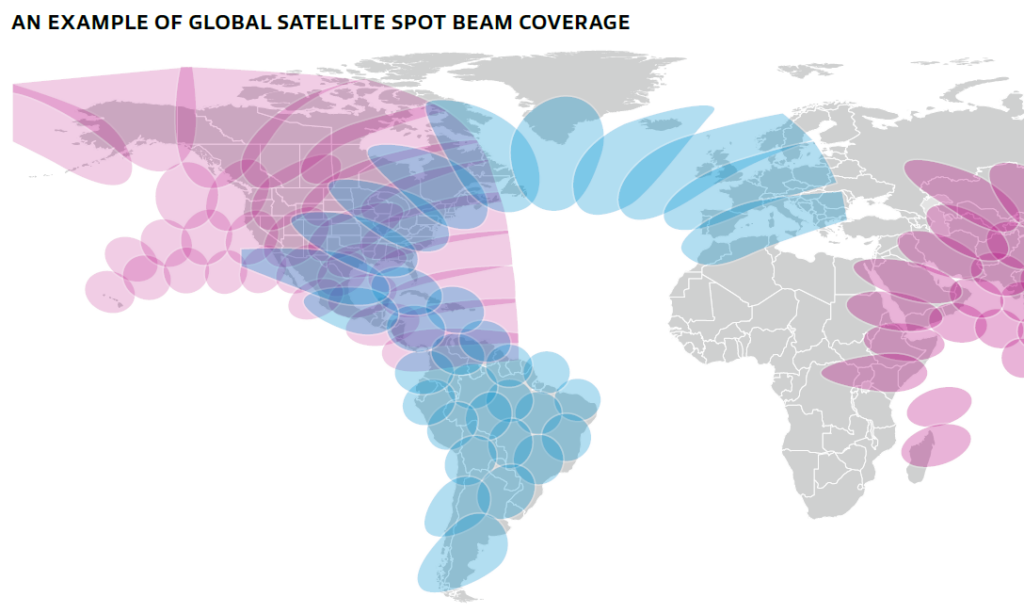One of the hottest technologies and topics in the SATCOM community is the emergence of high throughput satellites (HTS). In fact, the interest in HTS is so high across both the private and public sectors that discussion of the technology virtually dominated a large portion of both SATELLITE 2015 and the 2015 Space Symposium.
Why is there so much attention being paid to HTS? Well, many enterprises and organizations look at bandwidth the way people look at money – they really can’t get enough.
And the metaphor makes sense on many levels. Often, when salaries increase, people change their lifestyle accordingly. They find themselves spending more since they have the resources to accommodate a better standard of living.
The same thing happens with bandwidth. When organizations like the military or other government agencies start to get more bandwidth, they find new and exciting applications that take advantage of it.
For example, when more bandwidth becomes available, GEOINT evolves from blurry photos of the battlefield and troop movements to real-time video surveillance and enormous, interactive maps. Communications evolves from voice to 4K video teleconferencing. Information sharing evolves from pre and post-operation briefings to the ability to access digital information from anywhere on any device.
 Unfortunately, these new applications have higher bandwidth demands and eventually – as more and more are introduced – they begin to push the limits of the bandwidth available.
Unfortunately, these new applications have higher bandwidth demands and eventually – as more and more are introduced – they begin to push the limits of the bandwidth available.
When we’re dealing with the military – and discussing the warfighter in theater – the capabilities I mentioned above aren’t just “nice to have.” They’re increasingly mission-critical. They are the natural evolution to a more-connected, better-informed warfighter and decision maker. They can be the difference between life and death. That may sound dramatic, but it’s completely true.
It’s this need to constantly feed the bandwidth monster that is driving so much interest in HTS. And their ability to deliver this increased throughput at lower costs make them very attractive to the federal government and military, which is constantly looking for ways to operate more efficiently and cost-effectively..
HTS satellites dramatically increase their bandwidth capacity through frequency reuse. This means that each individual satellite can offer drastically increased bandwidth, and effectively deliver higher performance capability at a lower cost since the cost per bit goes down as more bits of information can be delivered simultaneously.
In my next post on the GovSat Report, I’ll take a deeper look at the different ways the military can utilize HTS to enable a more connected, informed and capable warfighter and decision maker. I’ll also look at some of the reasons why the military is leaving money on the table by not embracing this technology.
To learn more about HTS technologies, the capabilities they enable and the ways in which private and public sector users, alike, can benefit from them, download the whitepaper, “The Big Beam Boom,” by clicking here.
Additional Resources:
- HTS Vital to Reaching New Markets, Says NSR – Via Satellite Magazine
- Once-mocked O3b investment Now Force Multiplier for SES – Space News
